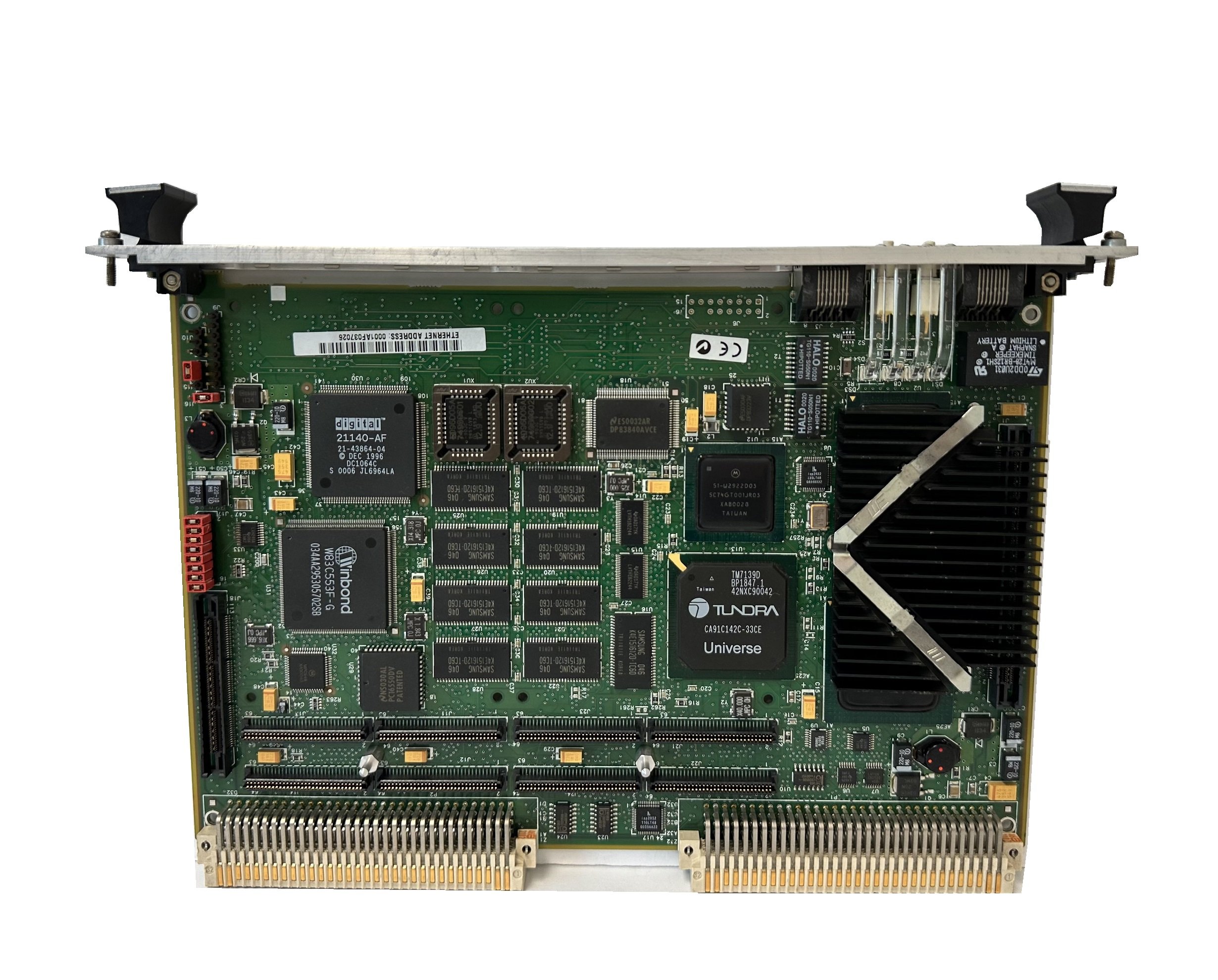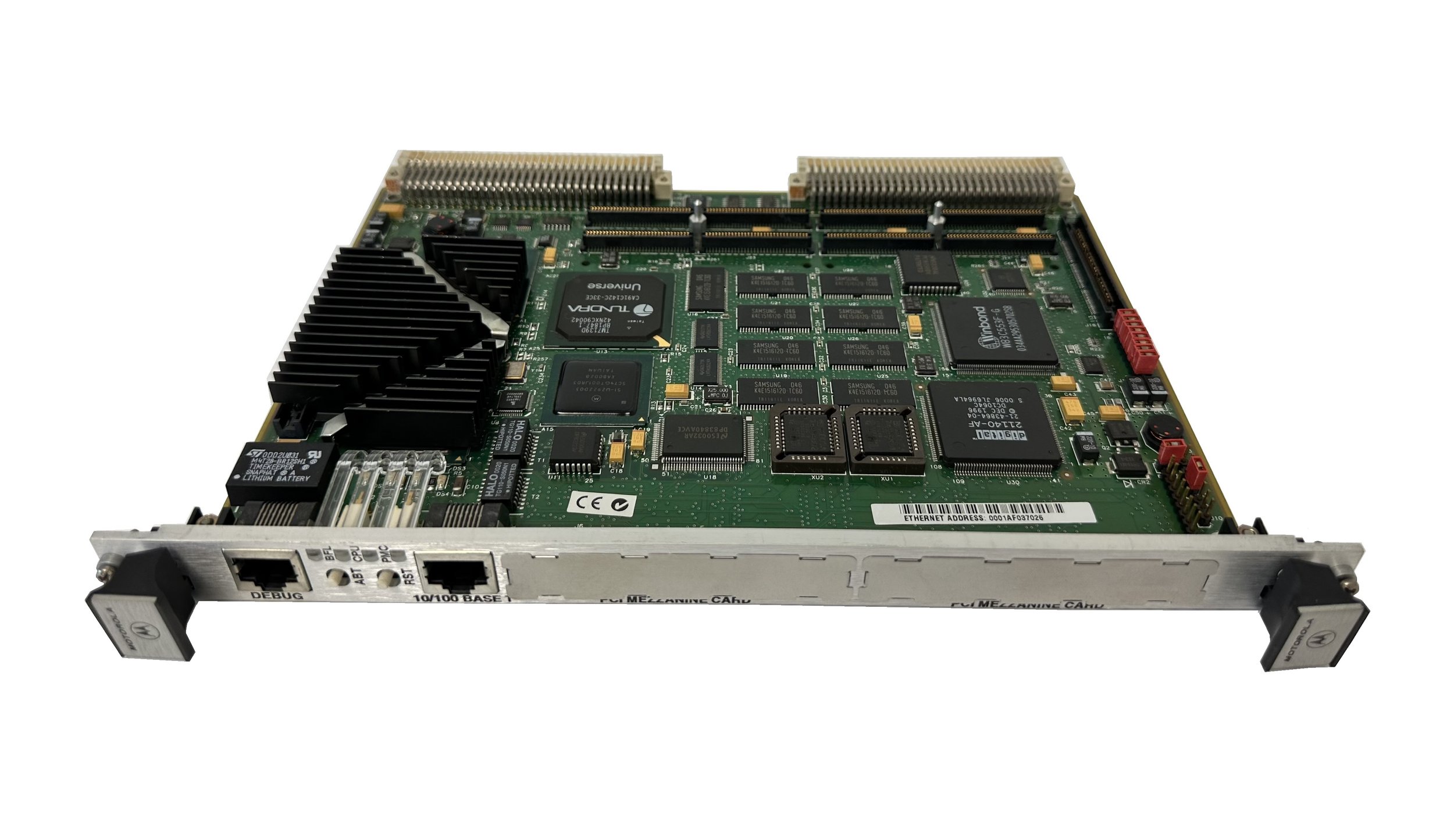Product Specifications
PowerPC 603 or PowerPC 604 32-bit microprocessor
L1 cache-16KB PowerPC 603 or 32KB/32KB PowerPC 604
16MB to 128MB of ob-board ECC DRAM
Two 32-pin PLCC/CLCC sockets for Flash memory; up to 1MB capacity for on-board firmware or user-specified requirements
4MB on-board Flash memory for user-specified requirements
On-board debug monitor with self-test diagnostics
Two IEEE P11386.1 compliant 32/64-bit PMC expansion slots with front panel and P2 I/O
64-bit PCI expansion mezzanine connector
8K x 8 NVRAM and time-of-day clock with replaceable battery backup
One asynchronous serial debug port
Four 32-bit timers, one 16-bit timer, one watchdog timer
Ethernet transceiver interface with 32-bit PCI local bus DMA, 10/100Mb/s with auto-negotiate speed select
A32/D32/BLT64 VMEbus master/slave interface with system controller function; high performance DMA supports VMEbus D64 and 64-bit PCI local bus memory burst cycles
4-level requester, 7-level interrupter, and 7-level interrupt handler for VMEbus
One VME slot, even when fully configured with two PMCs
Manufactured by Motorola. Refurbished in good condition.
The MVME2300 series of VME boards provides the performance of Motorola’s PowerPlus Architecture, and the ability to fully customize you application with two PCI Mezzanine Cards (PMCs.) Utilizing Motorola’s PowerPC603 or PowerPC604 32-bit microprocessors, the Peripheral Component Interconnect (PCI) bus for the on-board peripherals, processor/memory bus to PCI bus bridge, and a VME interface, the MVME2300 processor modules pack optimum levels of flexibility and performance into a single VME slot. The MVME2300 features dual PMC ports with support for both front panel and P2 I/O. P2 I/O-based PMCs which follow the PMC committee recommendation for PCI I/O when using the VME64 extension connector will be pin-out compatible with the MVME2300. In addition, to providing high performance expansion I/O, the IEEE P1386.1 compliant PMC ports form a common architecture for future generations of products. Changing I/O requirements can be satisfied by simply replacing PMCs while reusing the same base platform, reducing the long-term cost of ownership. To maximize the capabilities of the MVME2300, 5-row 160-pin DIN connectors replace the 3-row 96-pin connectors historically used on VME for P1 and P2. Two rows, Z and D, have been added to the VME P1/J1 and P2/J2 connectors providing a user with additional I/O. The VME64 extension connector is 100% backward compatible with existing VME card systems. The PowerPlus Architecture is a processor and bus architecture fully optimized to get the maximum performance from the PowerPC microprocessor family, the PCI bus, and the VMEbus The outstanding performance of VME processor boards based on the PowerPlus Architecture is not due to a single factor. A number of elements in the design of PowerPlus Architecture contribute to its outstanding performance including the Processor/Memory subsystem, high-speed local bus, optimally decoupled architecture, decoupling the processor from PCI, and the advanced VME interface which reduces PCI delays. More detail is available on the PowerPlus Architecture in the MVME2600 datasheet.
SKUE19-1 / SKUE19-2
Qty 37
Alternative P/N #: MVME2308, MVME 2308, MVME-2308, MVME2300, MVME 2300, MVME-2300



